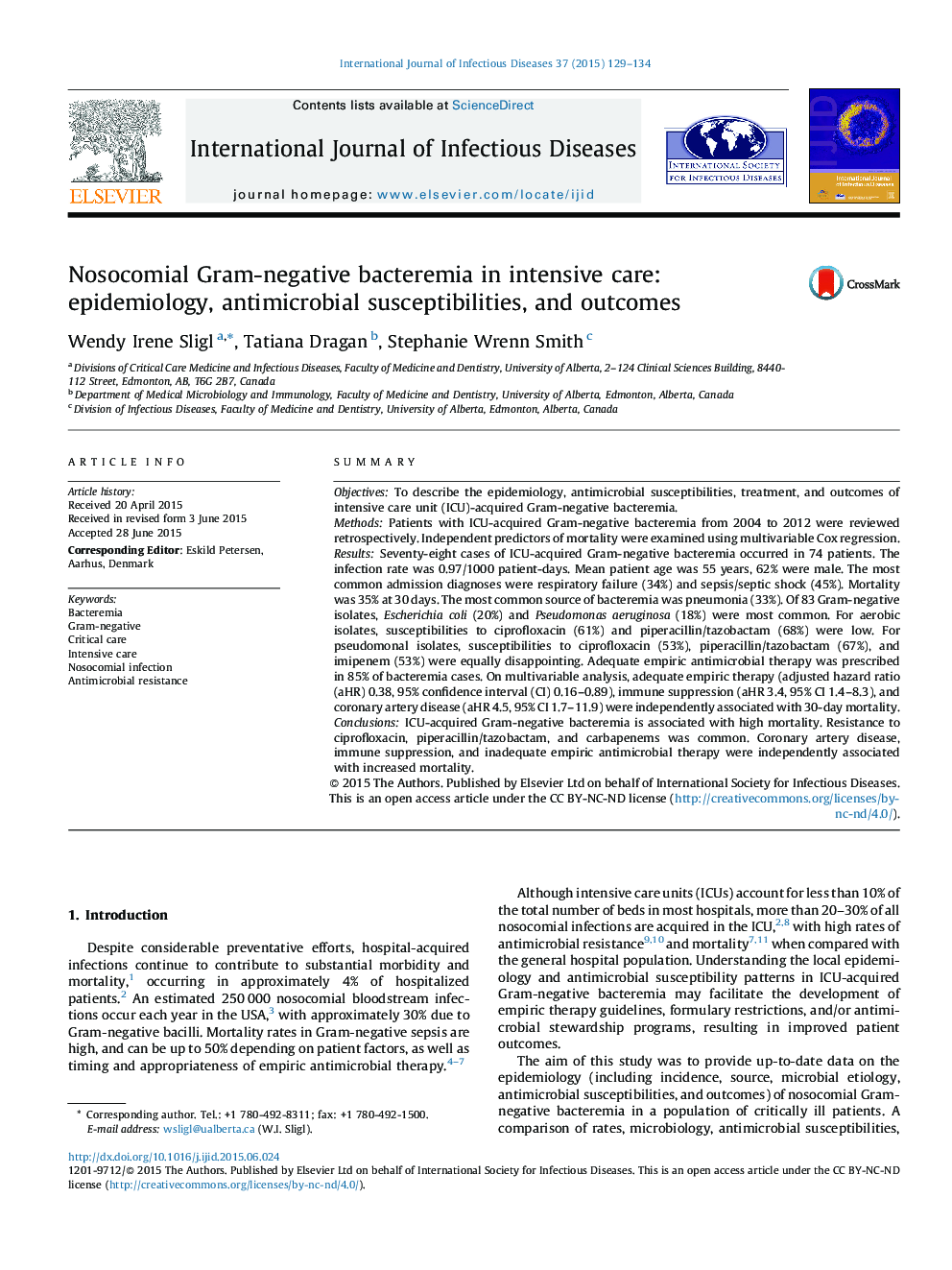| کد مقاله | کد نشریه | سال انتشار | مقاله انگلیسی | نسخه تمام متن |
|---|---|---|---|---|
| 3362116 | 1592058 | 2015 | 6 صفحه PDF | دانلود رایگان |
• The epidemiology and outcomes of intensive care unit-acquired Gram-negative bacteremia are described.
• Resistance to ciprofloxacin and piperacillin/tazobactam was common.
• Carbapenem resistance among pseudomonal isolates was surprisingly high.
• Most patients received adequate empiric antimicrobial therapy.
• Coronary disease, immunosuppression, and antimicrobial therapy predicted mortality.
SummaryObjectivesTo describe the epidemiology, antimicrobial susceptibilities, treatment, and outcomes of intensive care unit (ICU)-acquired Gram-negative bacteremia.MethodsPatients with ICU-acquired Gram-negative bacteremia from 2004 to 2012 were reviewed retrospectively. Independent predictors of mortality were examined using multivariable Cox regression.ResultsSeventy-eight cases of ICU-acquired Gram-negative bacteremia occurred in 74 patients. The infection rate was 0.97/1000 patient-days. Mean patient age was 55 years, 62% were male. The most common admission diagnoses were respiratory failure (34%) and sepsis/septic shock (45%). Mortality was 35% at 30 days. The most common source of bacteremia was pneumonia (33%). Of 83 Gram-negative isolates, Escherichia coli (20%) and Pseudomonas aeruginosa (18%) were most common. For aerobic isolates, susceptibilities to ciprofloxacin (61%) and piperacillin/tazobactam (68%) were low. For pseudomonal isolates, susceptibilities to ciprofloxacin (53%), piperacillin/tazobactam (67%), and imipenem (53%) were equally disappointing. Adequate empiric antimicrobial therapy was prescribed in 85% of bacteremia cases. On multivariable analysis, adequate empiric therapy (adjusted hazard ratio (aHR) 0.38, 95% confidence interval (CI) 0.16–0.89), immune suppression (aHR 3.4, 95% CI 1.4–8.3), and coronary artery disease (aHR 4.5, 95% CI 1.7–11.9) were independently associated with 30-day mortality.ConclusionsICU-acquired Gram-negative bacteremia is associated with high mortality. Resistance to ciprofloxacin, piperacillin/tazobactam, and carbapenems was common. Coronary artery disease, immune suppression, and inadequate empiric antimicrobial therapy were independently associated with increased mortality.
Journal: International Journal of Infectious Diseases - Volume 37, August 2015, Pages 129–134
